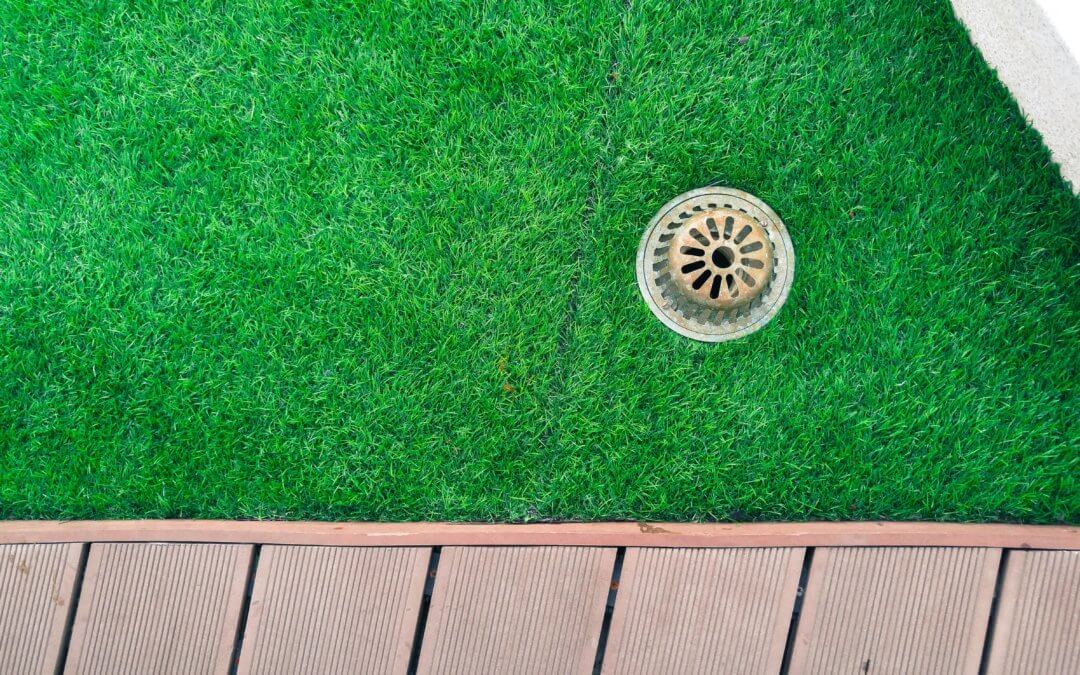If you have a dog and thinking of switching to synthetic grass in Houston, TX, you’re probably worried about pee stinking up your yard. With real grass, the soil absorbs the urine. How about artificial grass? You’re in for some great news— it’s much easier to keep turf odor-free than real grass.
How to Deal with Dog Pee on Synthetic Grass
Synthetic turf itself doesn’t absorb pet urine. But pet turf is specifically designed to accommodate the needs of pet owners. That means simplifying clean-up with features like anti-bacterial materials and a porous drainage layer.
On top of those pet-friendly features, follow these steps to keep your yard odor-free no matter how many times your dog goes potty on it:
Wash the Area as Soon as Possible
Cleaning the soiled spot as soon as your pet is done is the best way to get rid of and prevent foul smells.
The bad odor comes from waste products and substances like ammonia. They break down over time and are released into the air. Timing is important because the longer the chemicals stay, the stronger the odor gets.
Dilute urine with a mild soap and water solution, then rinse it out. Be generous when hosing down your pet’s play area so that all particles are flushed out.
Remove Pet Hair and Debris Regularly
One of the top reasons your lawn smells is that the urine isn’t draining properly. Debris and pet hair soak up the substances, making them difficult to wash away.
Regularly cleaning your lawn prevents pee particles from staying in your turf. To do this, use a blower to get rid of dust and dander from the surface.
You can also comb through the area with a power broom. Its bristles go deep into the turf layer, extracting embedded debris.
Have Your Drainage Installed Professionally
Liquids shouldn’t pool beneath the grass layer. Instead, they should flow quickly from the topmost surface to the soil base below.
Apart from blockages caused by debris, pooling is caused by an uneven base layer or a non-porous soil such as clay. Clay soil is compact and doesn’t absorb liquids quickly.
To correct these issues, make sure to hire experts on artificial turf installation in Houston, TX. They can make sure your sub-base is level and suggest the best aggregate material to install above your clay soil.
Install a Non-Absorbent Infill Synthetic Grass
Infill is added to your turf after the installation to protect the inner layers and make your lawn appear more natural. Notify your installer beforehand that you have pets and you’d like to use a material that’s compatible with pee.
Sand is commonly used as an infill but it holds urine particles and odor. Instead of this, choose a deodorized synthetic turf infill.
Some of them are non-porous, so urine washes away directly to the soil. There are also absorbent options that need to be replaced often. Your choice should depend on the ability of your soil layer to absorb liquids.
Apply a Recommended Cleaner
Ask your installer for the best products to use to deodorize your synthetic grass in Houston, TX. There are plenty of deodorizers available on the market, but not all of them are compatible with artificial turf.
These products help control unpleasant odors by breaking down the particles that cause it. They’re also non-toxic and safe for pets and children.
Enjoy a Fresh-Smelling Synthetic Grass All Year Long
Stop worrying about potty issues when you switch to artificial grass! Aside from creating a low-maintenance yard, turf also creates a safer, more comfortable and more fun outdoor space for your furry friend. Contact Houston Artificial Grass Pros today at 866-309-8873 for pet-ready, flawless artificial grass installation in Houston!

